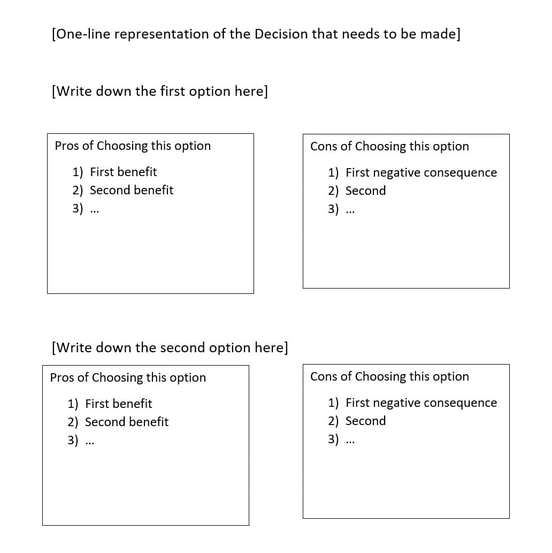Making Effective Decisions
The Art & Science of decision making
Effective decision making is something we all strive to do, no matter which area of work we are in. Repenting after having made wrong decisions, has happened to one and all of us ! So let’s talk about decision making. In one line, making a decision is the act of choosing one option between any number of possible course of actions.
This particular article is less about everyday decisions like which outfit to wear or where to go eat, and more about high stake decisions which we make at various work situations. The main focus of this of this article will not be intuition based decision making and will instead be focused on making thoughtful, logical decisions based on reasoning.
Before we get to the framework of making effective decisions; I often get asked,
Why are some decisions more challenging to make than others?
Answer to this, is relatively easy; These few things make the process of decision making hard:
- Unknowns – When you know less about the situation, you fear the decision because of how it can lead to something unknown and bad; this ties in with risk-taking abilities. Imagine you get asked, “Should we try this new restaurant today?” If you know nothing about it, then you are more likely to pick the more safer option.
- Human / relationship impacts – When the impact of a decision is an interpersonal issue (E.g. family / spouse decisions) or has similar effects; it makes the decision making hard. Sometimes you have to pick sub optimal options / choices that you would otherwise not have made.
- When you have too many options to decide between – that leads to decision making complexities as well. (The famous cereal aisle dilemma!)
The decision making framework
Even though there are many Frameworks that can be used make decisions but most of them rely on this five-step DREAD process:
- Define the Clarity of role & purpose
- Research Data behind the decision to come up with viable options
- Explore the options
- Actual decision making
- Declare, Execute, & communicate
Let’s look at them one by one:
Clarity of role & purpose: Can we clearly & succinctly write down what decision needs to be made in just one line of text? If not, you should definitely get your mission statement before proceeding. Before you head into the meeting room, write it down, and make sure stakeholders know it. An example could be “Should the marketing budget be cut by 15% to make more money for something else?
Research:
This next step has to do with whether or not the decision should be made. Does it really need to be made, what’s wrong with continuing Business as usual. In this example, What if we don’t cut the budget ? Can it be cut from some other department ? Identifying who should be in the room when the decision is being made and what their roles are is another crucial step but we will discuss that in the section where we talk about running effective meetings.
Research, research & more research: This is the third and the most crucial step, this is where we do the legwork to explore all the pros and cons of each choice. The way i have found useful for me personally, is having a blank paper and creating this template. Once you start filling it up, the situation starts becoming more & more clear. How you get this pros and cons data is again a wide open field. You can read the published documents, talk to the stakeholders, team members, the folks who would be impacted or even close yourself in a room and take time to jot this down. But no matter how you decide to do this, it is clear that there is no replacing this step.
Explore the options: Have we done the homework to come up with a list of options that is as comprehensive as possible, and remember; some might seem completely out of whack, and even un-necessary but being comprehensive at this stage helps when we have a new piece of data later that we didn’t have before and now, all of a sudden this bad options doesn’t seem that bad after all.
Declare: This is where we make the actual call. Sometimes, the answer is obvious from the pro & con analysis and sometimes it needs more thinking. Here is the a mathematical model to think about this in a more concrete way. I call this, the RAFT model ; short for Rating the factors.
Here, you can assign a score (Out of a max of 10) for the top five common factors, and see which approach has more of those in the Pro’s list. Similarly, if a negative factor has a high negative value then it tilts the balance in favor of other options.

Communicate & Execute: This is where we do the very important task of communicating the decision out to key stakeholders. We will have another separate article just on this but the key here is to communicate it wisely to the team so that it appears like a win win. Executing on the decisions is an entirely different ball game & good matter for more articles !
The framework is applicable not only to the collaborative & consultative types of decision making, where a leader gathers the information and works with the team to make the calls, but is also applicable to to situations when the leader has to make the calls without wanting to / having the chance to consult – autocratic fashion. The Vroom-Yetton model goes into much more depth for these kinds of decision making aspects.
